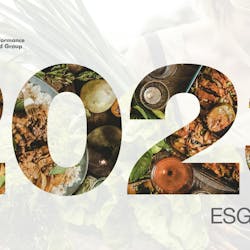According to 2016 research published by the Content Marketing Institute, 77 percent of marketers are using electronic newsletters to reach customers and prospects, and 91 percent are using email to deliver content of any kind.
The first question you should ask yourself is “why a newsletter?” And second, “what is my objective?” If it’s conversions, a newsletter is a long-term play. If it’s engagement, then a newsletter might be a great solution.
Next, before you jump in the deep end of the pool, you might consider if you have enough relevant content to share with your readers. Sit down and make a list of topics you could cover in your newsletter, as well as sources that might be used to curate content – because good content marketing includes both original content and curated content.
Make your content click worthy – if your recipients are reading your newsletter, make sure they’re learning something. Include lots of links – to source materials, calls-to-action, your blog, social media pages, even special-offer landing pages if you have them, but especially your website. And remember, all such pages should work together to move readers through your sales funnel.
Choose a great e-newsletter service provider; your options include:
- A turnkey newsletter service: there are dozens of them, such as Constant Contact or Mailchimp, and some will offer a free trial period and tiered pricing based on the size of your list;
- Independent digital marketing agencies that offer ala carte services, e-newsletters/content marketing being among them (but make sure they understand your key audiences and your subject matter or you’ll be rewriting every newsletter article); or
- In-house DIY with guidance from CRM, inbound lead gen and content providers, such as Hubspot, Marketo, Moz, Infusionsoft and dozens of others.
Create your newsletter for mobile first! It’s likely that more than 70 percent will view your missive from their mobile device. If they don’t like what they’re reading or seeing, they swipe left and delete it.
To avoid that, use responsive design for your email newsletters, which involves and optimizing the content for viewing across multiple screens and devices. More importantly, your e-newsletter should be ideally optimized for “small screen” users – short bursts of copy are best, along with design elements that are not huge. That’s why it’s important that you choose your newsletter template carefully.
Personalize every chance you get. For instance, use the recipient’s name or their company’s name somewhere near the top of the newsletter to enhance engagement and readership. Consider segmenting your list by type of recipient (such as CEO vs. customer service representative) and tailoring the content to make it more relevant and helpful to your readers. And make sure the email “sender” is a recognizable name. There’s nothing worse than a newsletter coming from XYZ Company rather than Sally Saleswhiz.
Make your subject lines and preheaders count. Whether your recipients are viewing and reading your newsletter on a mobile device or desktop, you want them to open it. While most marketers understand the importance of cleverly written subject lines, they often forget about the preheaders, or snippets, that appear below the subject line.
If you don’t deliberately write a snippet and place it in the preheader (or “preview”) section of your template, it may default to the first element of copy that appears in the newsletter. Not very deliberate, and typically a missed opportunity for sales and marketing messages. If your logo appears at the top of your newsletter, use an alt-image tag because your logo won’t translate into copy for the snippet.
Avoiding Pesky Spam Filters
Spam filters include a laundry list of criteria when judging whether an e-newsletter ends up the recipients junk email box or gets “spammed.” The filters weigh each factor and add them up to assign a spam score, which determines whether an email will pass the spam test. If the score exceeds a certain threshold, your email will get flagged by your recipient’s server.
As for that laundry list of criteria, it’s constantly changing, and typically determined by what your recipients mark as spam or “junk.” That’s why there is no fix-all solution. There are, however, some tips that MailChimp recommends to make your newsletter less “spammy.” According to the marketing automation provider:
- Spam filters want to know that you’re acquainted with the person receiving the email. They recommend using merge tags to personalize the To: field of your campaign, sending through verified domains, and asking recipients to add you to their address book.
- Some spam filters will flag a newsletter if anyone with the same IP address has sent spam in the past. So check your IP, or send from a unique one, to avoid this pitfall.
- Spam filters can be triggered by sloppy code, extra tags, or code pulled in from Microsoft Word. That’s why it’s typically best to use a preformatted template or work with an e-newsletter specialist.
- Some spam filters will flag emails based on specific content or images they contain, so make sure your images are sized correctly and avoid blatantly promotional words that spam filters are looking for.
- Make sure your subscribers have opted-in to receiving your emails. And consider using a double opt-in process in which an email is sent to the subscriber’s email asking them to “validate,” “verify” or “confirm.”
- Test, test, test! Use A/B or multivariate testing to learn how changes to your content affect delivery and engagement. Multivariate testing uses the same core mechanism as A/B testing, but compares a higher number of variables, and reveals more information about how those variables interact with one another. To learn more, click here.
About the Author
John Healy is Co-Founder of The Vending Marketer -- www.vendingmarketer.com -- a digital marketing agency that exclusively serves vending, OCS, micro market and other refreshment services businesses. He is also CEO of Healy Consulting & Communications Inc., a traditional, digital and social media marketing firm that strives to ensure its clients’ relevance while fueling their growth and success. His affiliation with the industry dates back to 2009 through his image campaign work for NAMA. Reach him at [email protected]







